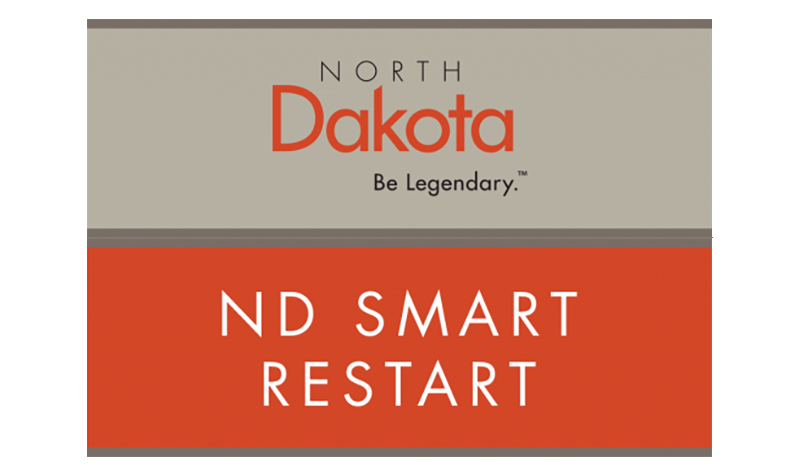From the Dean: “Best places to practice”
 Last year, I mentioned an annual survey of the attractiveness of various physician practice locations around the U.S. conducted and reported by Medscape, a commercial online portal for physicians and other health professionals. The survey for 2020 was just released (“2020 Best and Worst Places to Practice”). It ranks all of the states in the country as far as their attractiveness for physicians to practice there, especially in the COVID-19 era. Last year, North Dakota was at the top of the list, and again this year we placed quite high at No. 4. We were complimented for our unspoiled countryside and outdoor fun, along with a high degree of physician happiness and a favorable regulatory and malpractice environment. Additionally, we tied with five other states for the highest level of per-capita public health preparedness funding, clearly very important in the COVID-19 era. And to spare you the effort of looking it up, there were interesting findings as far as the best- and worst-ranked states. Our neighbor to the east was ranked No. 1, while Arizona was ranked worst from a physician practice standpoint. This survey helps reinforce one of the main tenets of the UND SMHS – that practicing in North Dakota (whether as a physician or other health care provider) is attractive and sought after by our graduates and others.
Last year, I mentioned an annual survey of the attractiveness of various physician practice locations around the U.S. conducted and reported by Medscape, a commercial online portal for physicians and other health professionals. The survey for 2020 was just released (“2020 Best and Worst Places to Practice”). It ranks all of the states in the country as far as their attractiveness for physicians to practice there, especially in the COVID-19 era. Last year, North Dakota was at the top of the list, and again this year we placed quite high at No. 4. We were complimented for our unspoiled countryside and outdoor fun, along with a high degree of physician happiness and a favorable regulatory and malpractice environment. Additionally, we tied with five other states for the highest level of per-capita public health preparedness funding, clearly very important in the COVID-19 era. And to spare you the effort of looking it up, there were interesting findings as far as the best- and worst-ranked states. Our neighbor to the east was ranked No. 1, while Arizona was ranked worst from a physician practice standpoint. This survey helps reinforce one of the main tenets of the UND SMHS – that practicing in North Dakota (whether as a physician or other health care provider) is attractive and sought after by our graduates and others.
Next week I’ll be “attending” the triannual meeting of the Liaison Committee on Medical Education (LCME), the national medical school accreditation body jointly sponsored by the American Medical Association (AMA) and the Association of American Medical Colleges. Its determinations of accreditation status for medical schools are recognized by the U.S. Department of Education. I am a member of the national LCME group, and we’ll review a variety of accreditation surveys and reports of various medical schools in the U.S. and Canada. What will be a first for us is that this meeting will be virtual, with all of us participating from our home locations. Usually we get together for the several-day meeting, typically in Chicago (home of the AMA). The meeting usually runs for two-and-a-half busy days; next week, we will meet for “only” five hours a day for two days. One of the more useful benefits for me as a “medical school” dean (as you know, I’m dean of the School of Medicine and Health Sciences) to participate on the LCME committee is hearing the often-robust discussions of the various LCME members about accreditation issues. I fear that some of that usually spirited discussion may be muted by the online and shortened format. We’ll see – and I’ll report back with my impressions.
Finally, I’m pleased to be part of the effort working hard to deal with the pandemic as we continue the North Dakota Smart Restart process, and help North Dakota position its already truly outstanding public health enterprise to be the best in the country. One of our big initiatives is to ramp up testing for students (along with faculty and staff) who will be returning to the various North Dakota University System (NDUS) campuses this August, including UND. As Governor Burgum points out (and for which he should get great credit), North Dakota ranks high on per-capita testing nationwide. We hope to continue to shift from testing symptomatic individuals to what is called surveillance testing of otherwise low-risk asymptomatic individuals, which we hope to do widely on the various NDUS campuses. As the governor emphasized during his Wednesday press conference, more surveillance testing is planned soon, including surveillance testing (outdoor drive-up testing) today from 10 a.m. until 6 p.m. in the west parking lot of the Fargodome and in other cities next week.
Joshua Wynne, MD, MBA, MPH
Vice President for Health Affairs, UND
Dean, UND School of Medicine & Health Sciences



